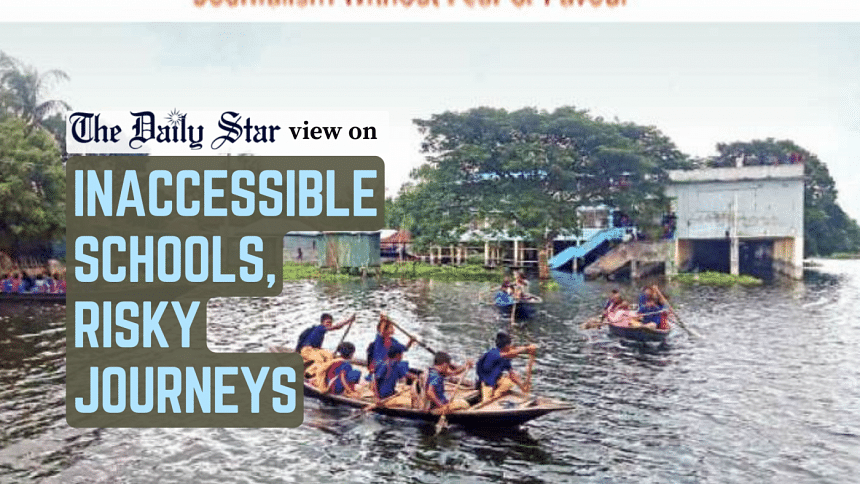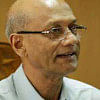Why can't children reach school?

We are disheartened to see that children, even today, are struggling to attend classes in the country's low-lying regions. According to a report by this daily, three schools in Pabna's Gaznar Beel remain inundated for half the year, starting from monsoon, forcing students to miss classes or resort to unsafe means of commute.
To reach their institutions, many students get on boats and row themselves, which is both risky and burdensome. Others must pay hefty amounts of fare to boatmen in order to get to school. Half the students stop attempting to reach school, and naturally, attendance plummets around this time. Headteachers, meanwhile, are asking for the bare minimum: proper, permanent boat facilities. But that request has remained unfulfilled.
Worse, this is far from an isolated case. Just a month ago, the academic activities of 60 schools and madrasas were suspended as Gaibandha was flooded, disrupting the education of scores of children. In Sirajganj, river erosion is devouring one school building after another, leaving students to study either under the open sky or inside makeshift structures. One thing is common in all these cases: many of the students do not return to school. This is a deeply worrying trend. The government has ambitious goals such as overcoming illiteracy and bringing dropout rates to near zero at primary and secondary levels. But how will it ever achieve such targets if the scenario is such in areas where the natural environment is volatile and nothing is done to adapt to this effectively? Why don't local administrations – which should be most attuned to an area's geography and community – take urgent steps to address such situations as and when they occur? If a school building becomes inaccessible or is lost to natural calamities, they must find suitable alternatives, prioritising the education of children over regular development projects.
In the meantime, virtual modes of education, despite their many limitations, could facilitate learning alongside in-person classes. Such an initiative may require huge amounts of resources but it is essential if we want to build a truly Smart Bangladesh. Another option would be floating schools. In the country's northern region, hundreds of students attend classes in boats-turned-schools run by individuals and NGOs. This arrangement, intended to facilitate the education of children who face regular flooding, is seen in many other countries including Cambodia, Nigeria, and the Philippines.
If the government is truly committed to making Bangladesh a higher-middle-income country by 2030 and a developed one by 2041, it must ensure that our young ones can at least reach school without trouble, as they are the ones who will take us to those milestones.

 For all latest news, follow The Daily Star's Google News channel.
For all latest news, follow The Daily Star's Google News channel. 










Comments